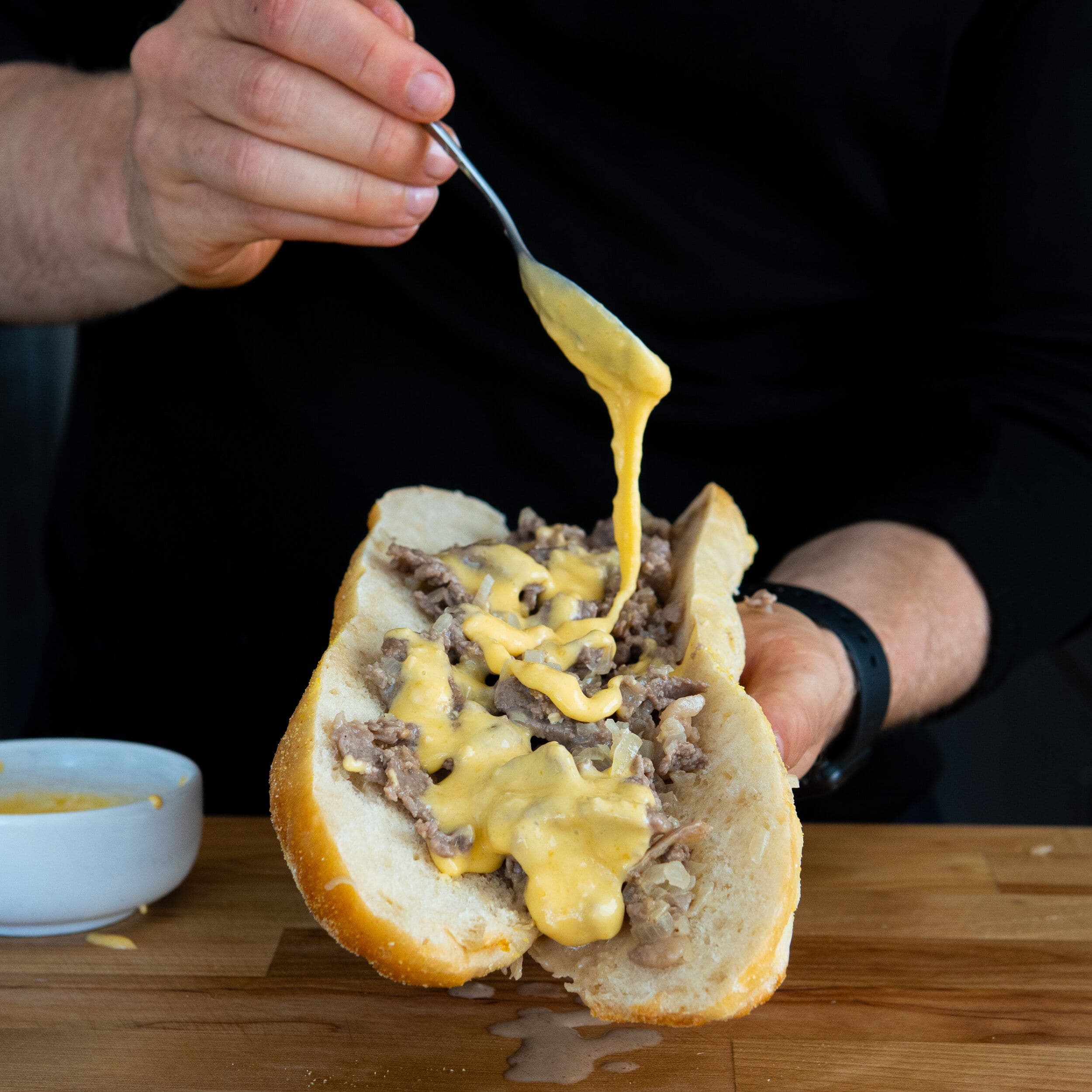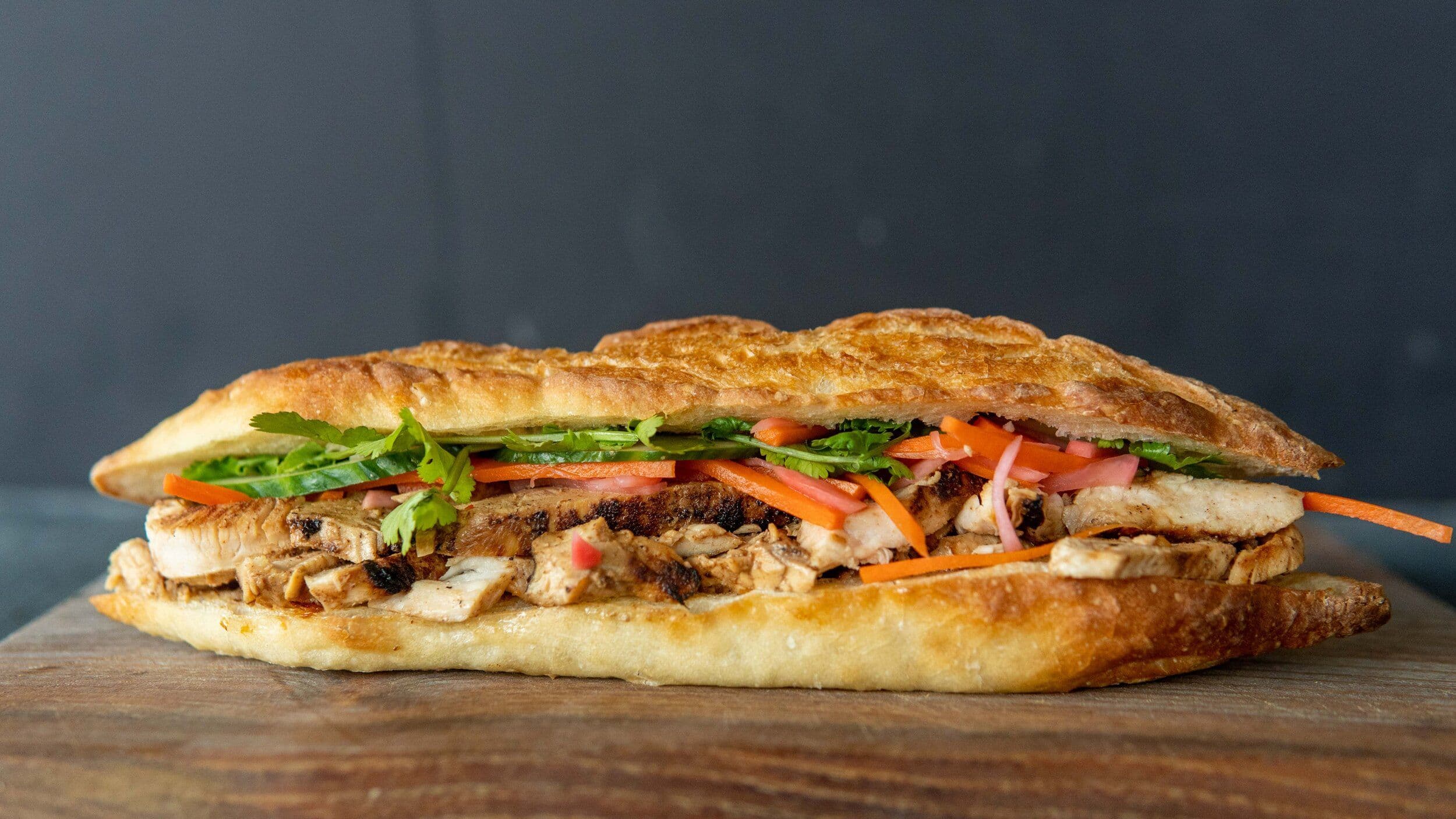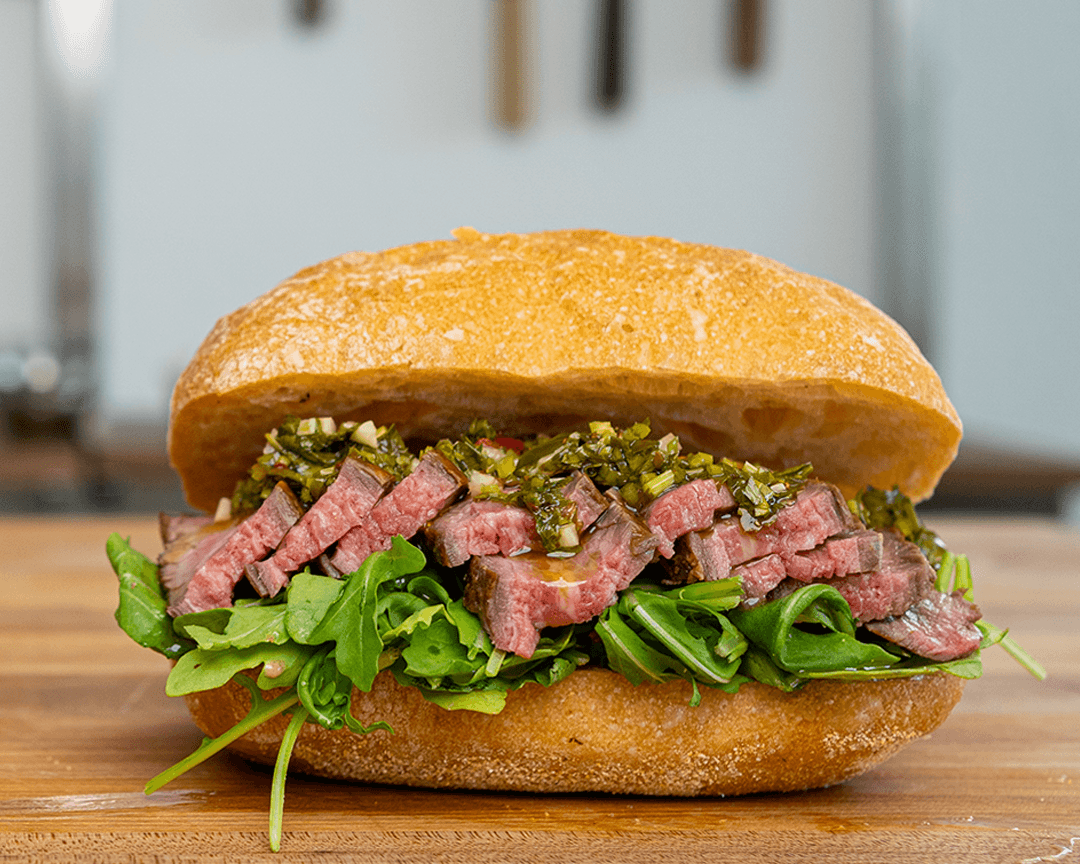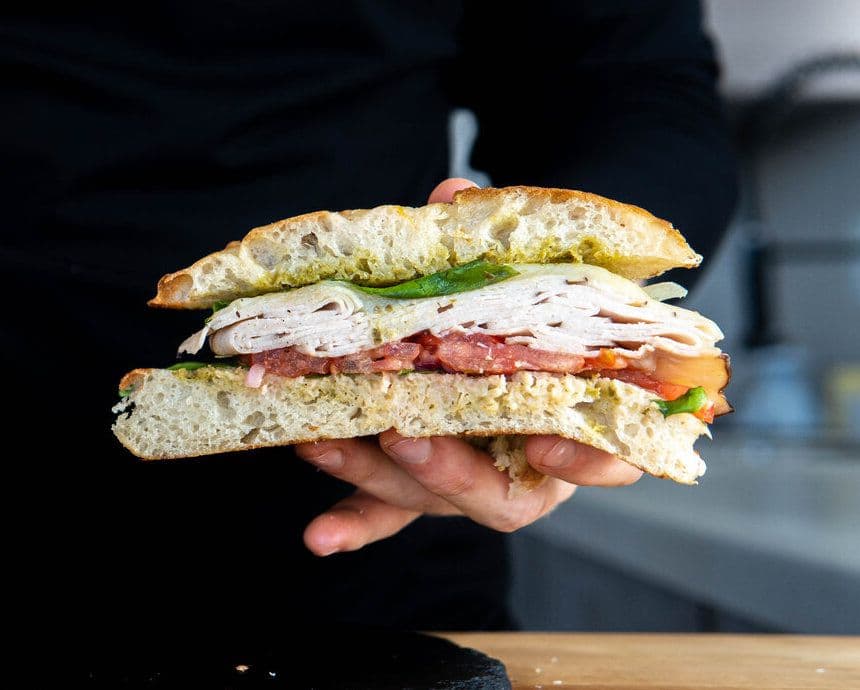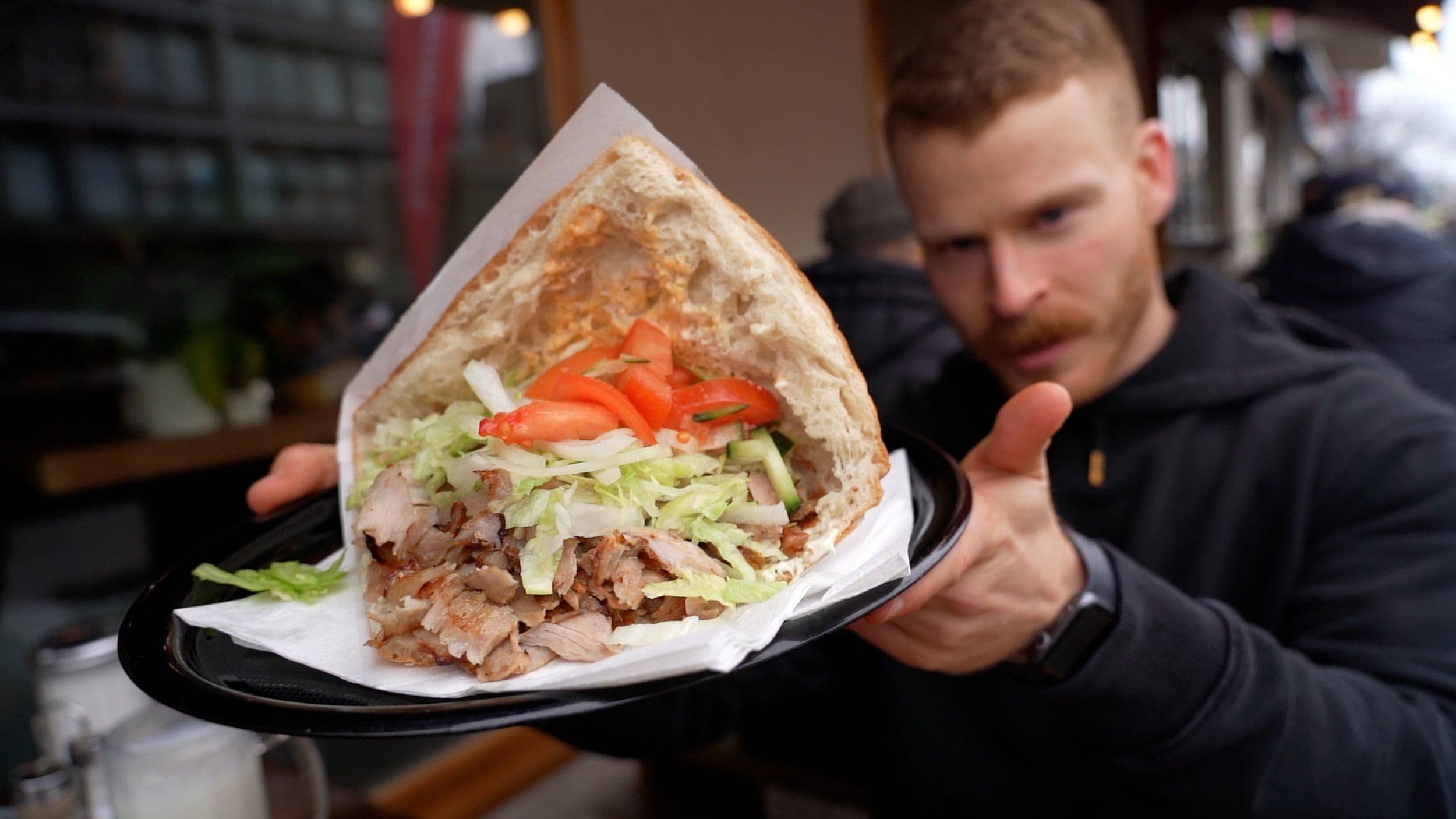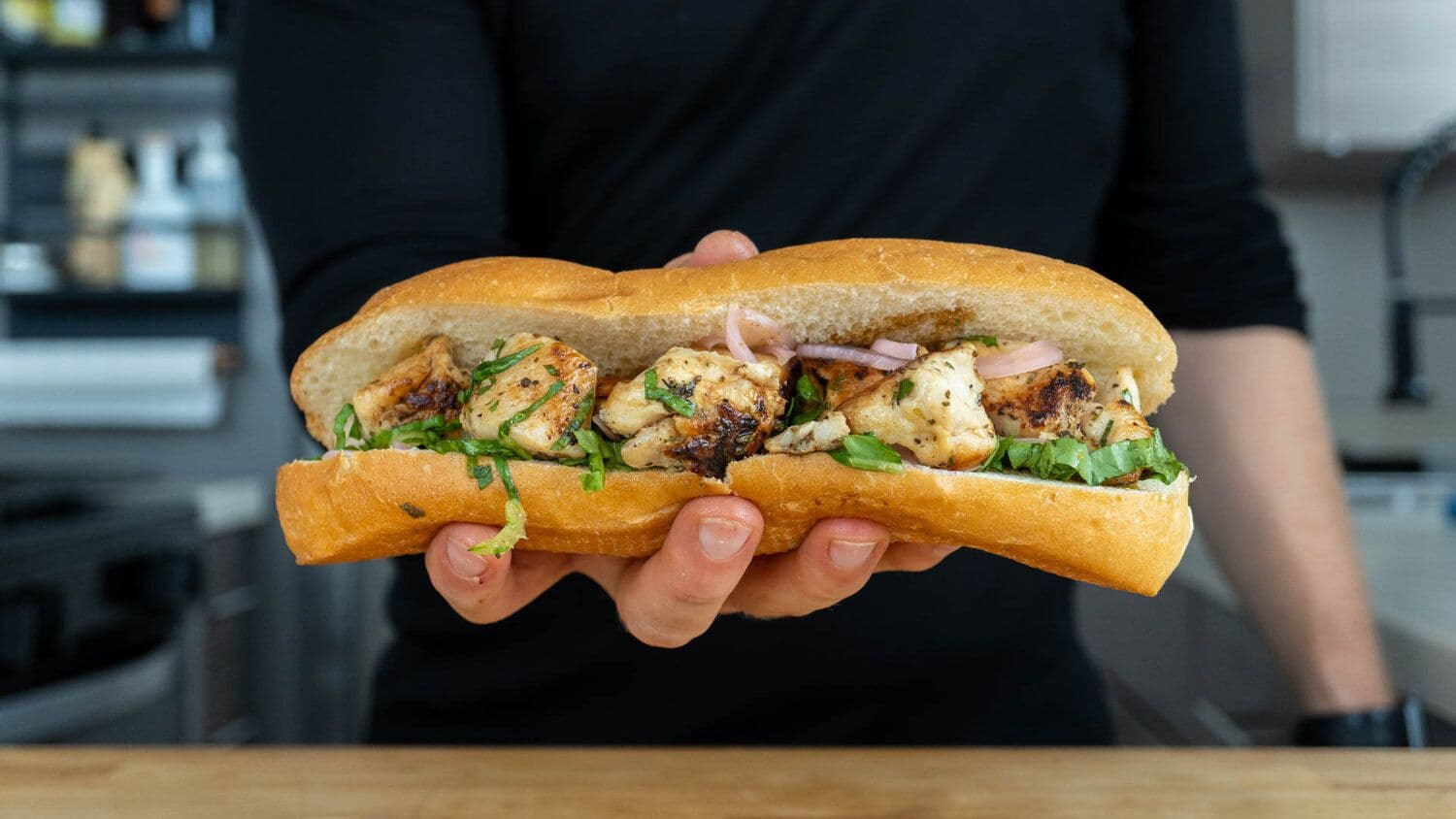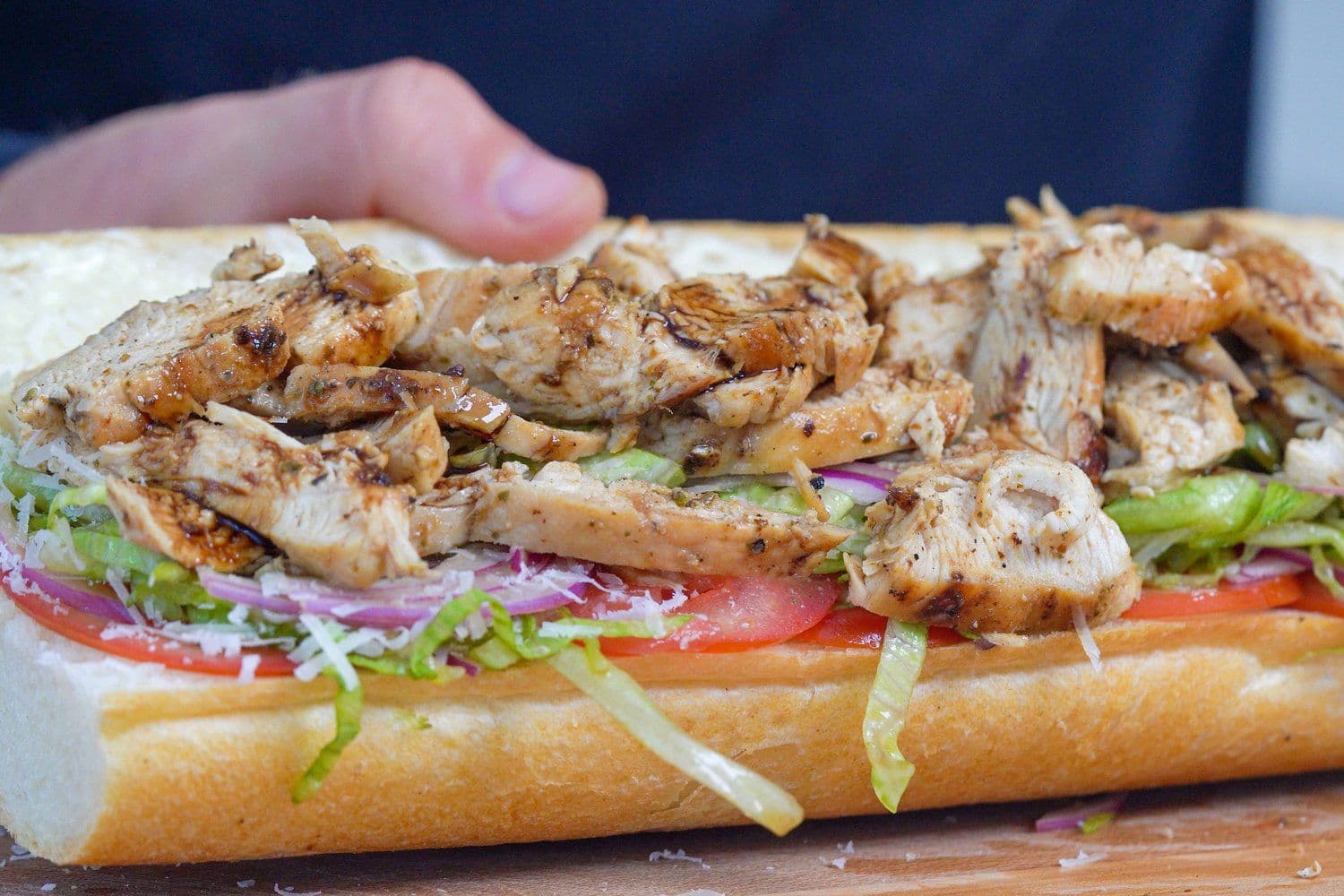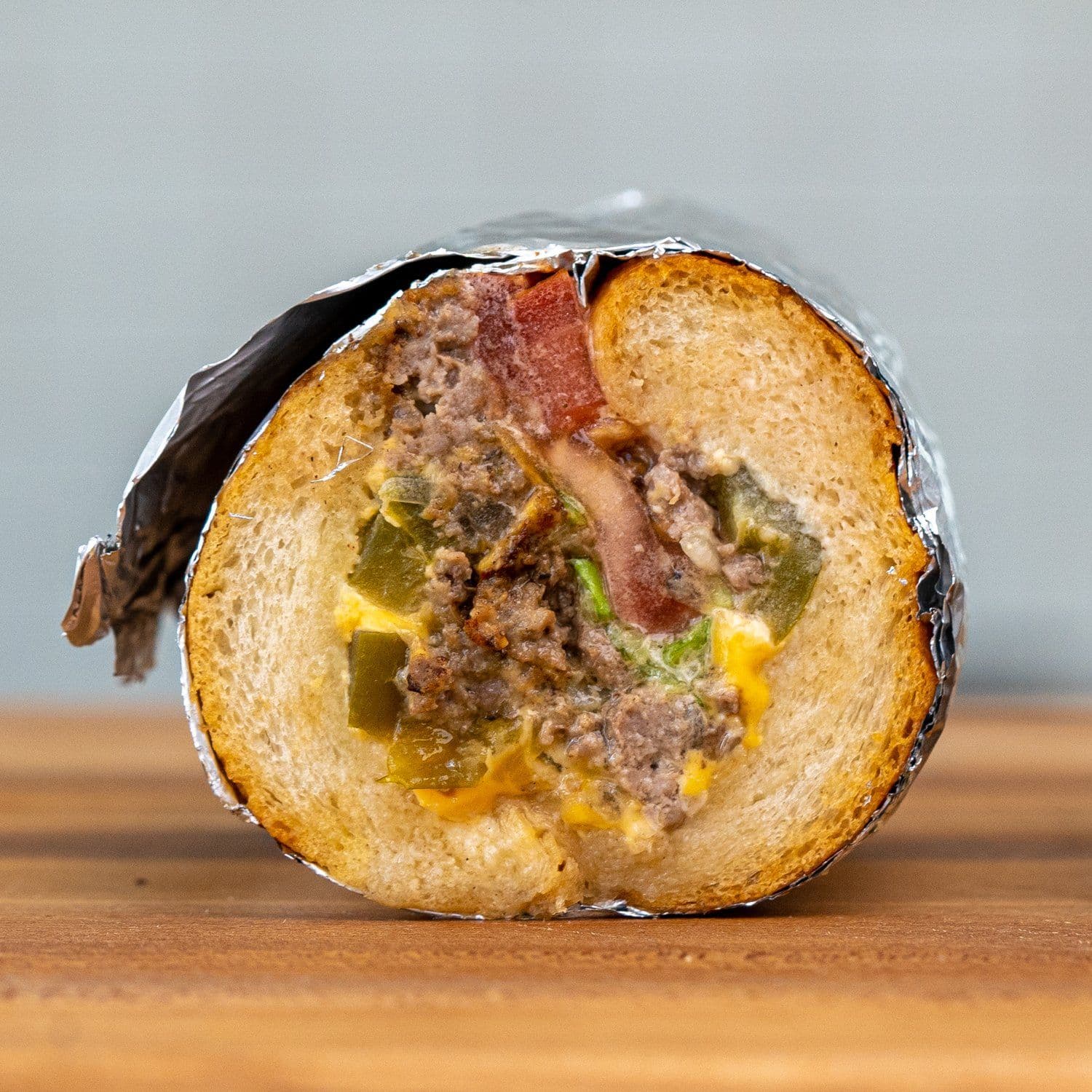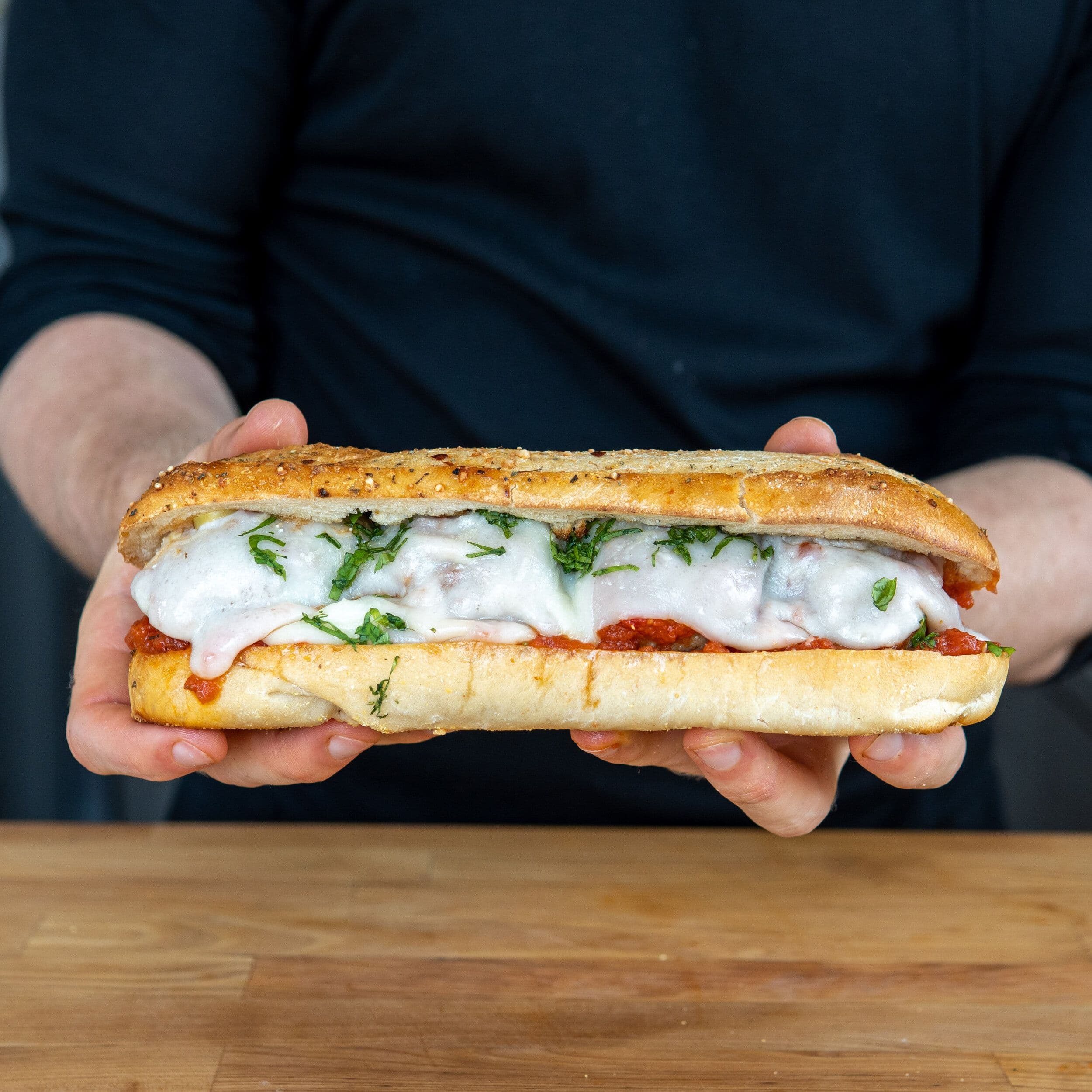1) Choose the right bread.
- A sandwich is only as good as its bread because it makes the biggest texture difference. But different sandwiches require different styles. Pick thoughtfully.
- For subs, the bread needs to be soft & chewy, yet sturdy enough to hold fillings plus able to absorb moisture without getting soggy. Try our hoagie roll.
2) Always lubricate — dry sandwiches are the worst.
- Make sure you have enough moisture throughout each bite via the meat choice, condiments, pickled toppings, dressings, cheeses, or sauces.
3) Add vinegar & oil/fats
- Sub shops do this for a reason: fat & acid carry & enhance flavor to our taste buds. They amplify all the other ingredients.
- Even a few drops of dressing, olive oil, or a light layer of mayo can make a huge difference.
4) Season your veggies
- Don’t add plain vegetables to a sandwich. At least salt & pepper them, pickle them, dress them (see #3), or cook them in some way.
- One of Ethan’s favorite moves for an Italian hoagie is adding dried oregano + garlic powder on top of the shredded lettuce for extra aroma.
5) Layer it thoughtfully
- Alternate textures. A safe bet is to build up with meats → cheeses → veggies. Why? If you carelessly put a tomato in the middle, for example, your sandwich layers might slip and topple.
- You’ll want mayo/sauce on both sides of the bread to create a protective barrier that prevents the bread from getting soggy.
6) Wrap it (in foil or parchment paper)
- The wrapping compresses the layers and sauces and holds everything together, making the texture, chew, and eating experience so much better. If the sandwich is toasted, everything , softens, and warms through evenly.
- This might seem unnecessary at home, but this is one of the biggest things you can do to replicate a deli sub.


